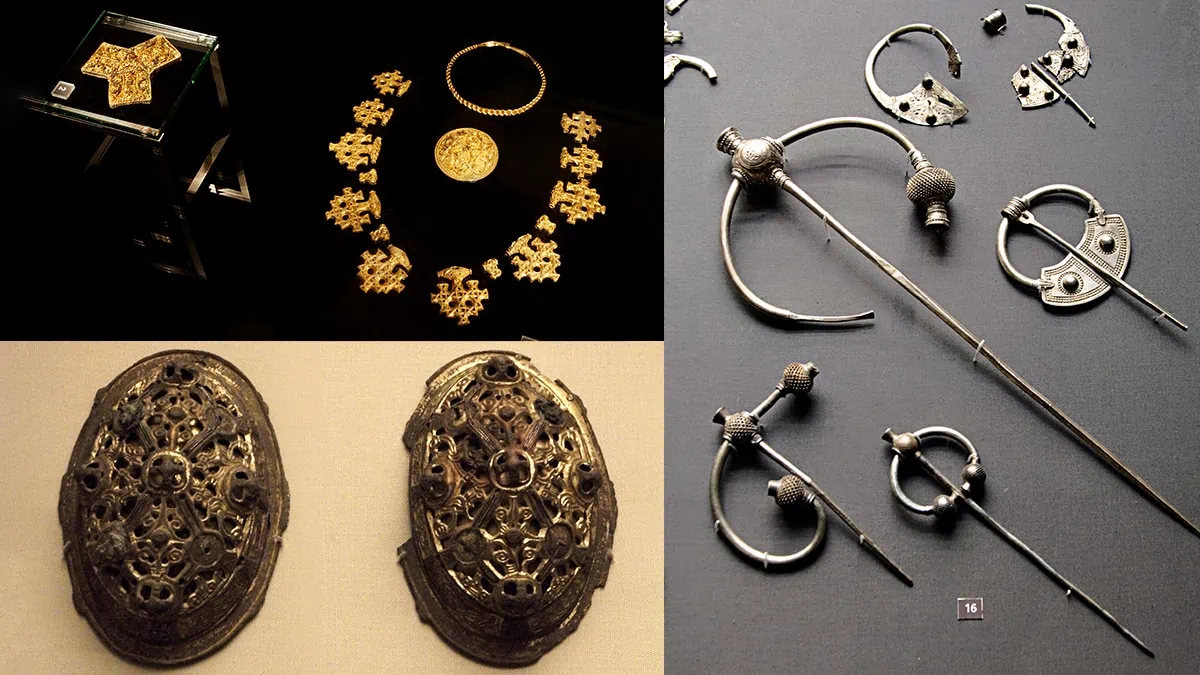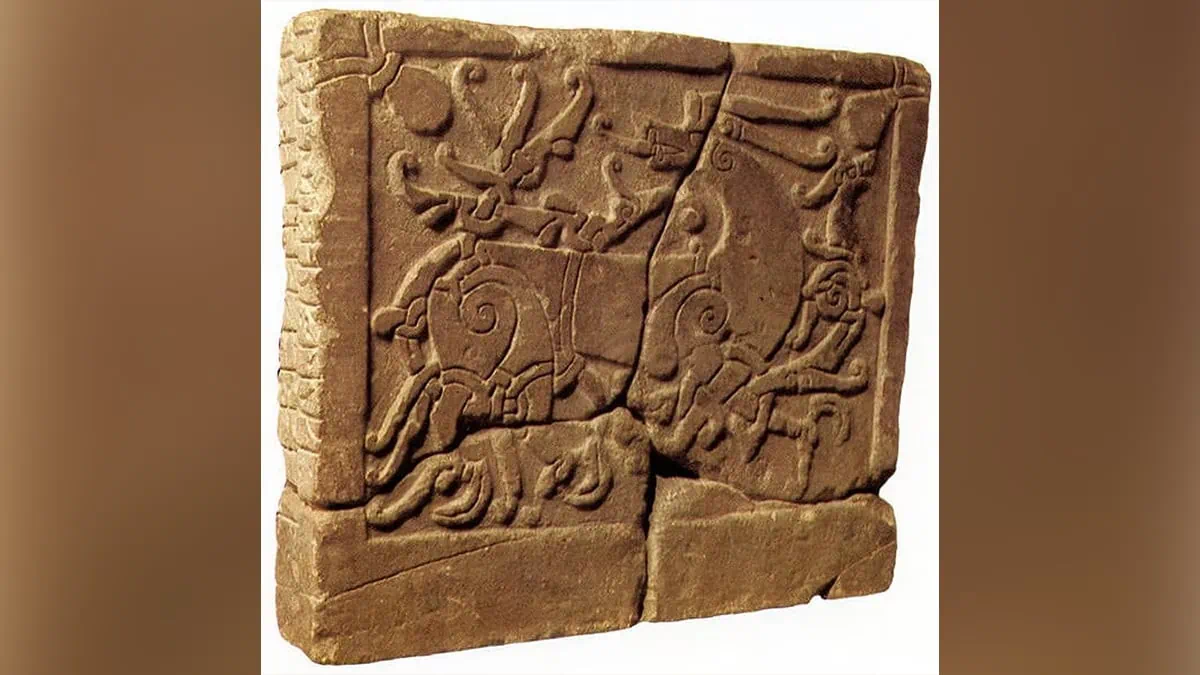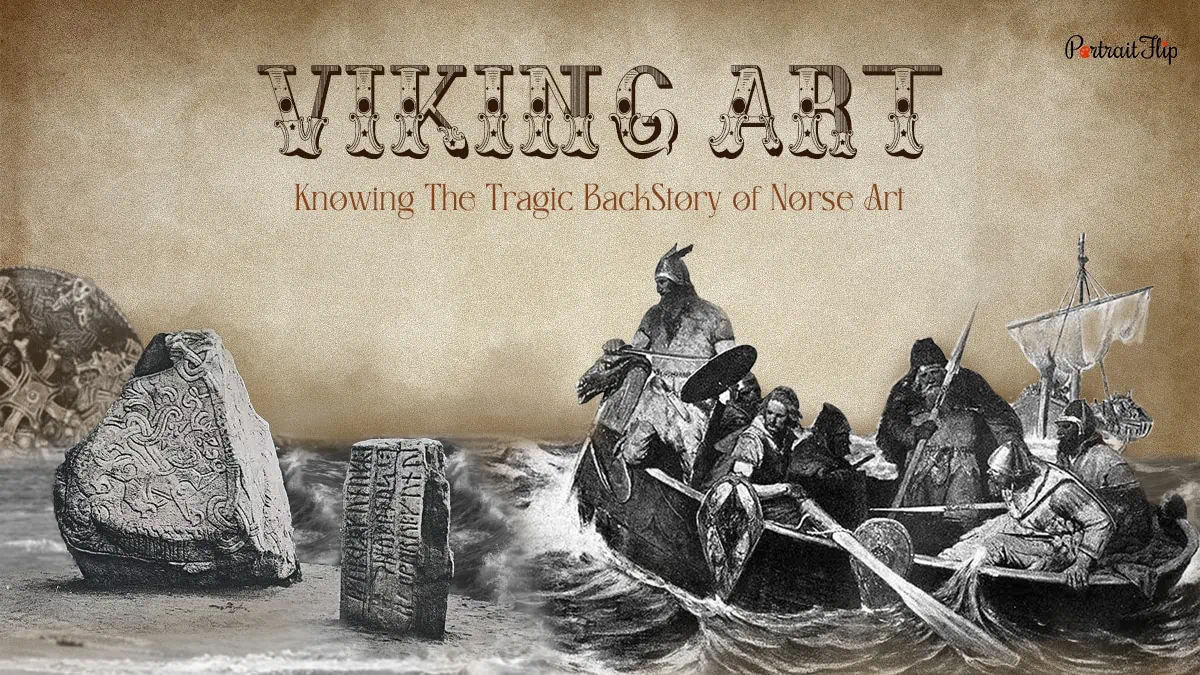History has been unkind to Viking art.
I know it’s a harsh yet strong statement. But it’s true.
We’ve always overlooked the creations of Vikings.
All we do is pay attention to their animal carvings and stone art and feed our perceptions that are historically untrue.
It is true that they were barbaric, violent, and ignorant and invaded Western and Eastern Europe and Northwest Asia.
But speaking of art, they, like others, had a belief in certain religions—pagan and polytheistic Old Norse religions.
Which tells us that they were the followers of certain cultures, and every culture breeds art.
Viking art, or Norse art, which faded due to the rise of Christianity in Scandinavia in the mid 10th century, was heavily influenced by Celtic, Germanic, later Romanesque, and Eastern European art.
Which unfortunately was overlooked, cornered, and boxed to appear in the limelight.
But thanks to Nancy Wicker, a professor from the University of Mississippi, whose academic work helped us compose this blog that’s going to cover every aspect of Norse art and culture.
We have even taken references from history books and blogs to produce this piece.
Let’s unlearn the stories, events, and facts associated with Vikings, and dive deeper into this blog inspired by experts’ works.
Table of contents
Brief History of Norse (How Did Viking Art Come Into Existence?)
To understand how Norse art came into existence, we must first learn who the Norsemen were.
Vikings/ Norsemen were from Scandinavia, a collective European country of Denmark, Norway, and Sweden.
Some would call them settlers, whereas others would call them invaders.
Looking at historical events, you could sense that the Vikings were invaders.
They have invaded Britain, Ireland, France, Russia, Israel, and even some parts of America.

There are several reasons why Vikings invaded their nearby surroundings and regions.
The most common is that they wanted to expand their territory by plundering countries and to increase their trade through ethical and unethical means.
Vikings would use longships to navigate across the seas; that’s how art became a prominent part of their practices.
For Vikings, art isn’t only about aesthetics; it is also about functionality.
The early art phase of Norse art focused on wooden carvings. But later years inclined toward aesthetic association with religious beliefs.
Guess what? Vikings weren’t only invaders but also farmers, traders, and artists who designed longships and decorated them with motifs, from bows to sterns.
But had they ever involved themselves in other art forms except for stone and wooden carving?
From one country to another, Norsemen expanded their territory while simultaneously producing different Viking art forms, including wooden carvings, jewellery, motifs, runestones, and others.

Not only did Viking arts help them disseminate their values, but they also engaged in trading activities.
Let’s briefly learn how different art styles existed between the late 8th and 11th centuries that shaped Viking art history.
(Also Read: A Guide To Illusionism Art)
Viking Art Styles
Viking art evolved with time, with their expansion into European countries and some parts of North America.
Existing between 793 CE and 1066 CE, Viking art was shaped by external influences.
Of course, Norse art was more about object making but whichever countries they invaded had some influences on Viking culture and designs.
From wooden carvings to intricate jewelry, Viking art had gone through miles to sustain itself.
(Also Read: Psychedelic Art)
A. Oseberg

Inarguably, the Oseberg style is the most popular art style in Viking art.
Wooden longships, which Vikings would use to navigate to their nearby destinations, were made in this iconic style.
Quite complex, intricate, and deceptive to some extent, the Oseberg style had animal motifs, including birds and human faces being masked on the prows.
Gripping beast and sinous animal forms were its primary themes, which continued for 150 healthy years
Craftsmanship was at a whole new level, which even progressed as the Vikings moved forward.
Which resulted in the production of tapestries that demonstrated religious sentiments and battle scenes.
(Suggested: Famous Religious Paintings)
B. Borre

Many similarities can be found between Oseberg and Borre, but a few notable differences make Borre’s Norse art style stand out from others.
Various elegant motifs were made with different forms, usually tighter than its previous style (Oseberg), making it more compact.
Motifs featuring animals appear more natural and realistic, which means artists at that point were highly skilled and particular.
Figures, objects, and subjects made in Borre Viking style appear as if they are interlocked with each other.
The era wasn’t equipped with innovations because the art made in it was deeply rooted, and no external influences really affected Vikings or their artistic approaches.
It was the British Isles and Baltic areas like Russia that witnessed Borre’s style in abundance, apart from Scandinavia.
(Recommended: Schizophrenia Art)
C. Jelling

Jelling was heavily influenced by various other styles and has mainly appeared on diverse objects.
Art made in the Jelling style usually opened up and expanded, emphasizing the background.
Let’s take a look at the silver cup, which shows the characteristics of an S-shaped animal with a gigantic head and a pointed, curvy nose.
Designs are a bit complicated, but characters could be instantly identified. It mainly influenced Europe associated with stone art.
D. Mammem

Mammem style is named after a village located in Denmark that discovered an axe head in a grave.
Mammem, an advanced version of Jelling style, wasn’t functional as it was primarily used for ceremonial purposes in Norse culture.
The composition made using Mammem is exaggerated and entails geometric shapes in an unconventional manner.
The general style features virtually lifelike huge fighting beast like lions, birds, and serpents.
They were incredibly active and energetic, with spiral shoulders and hips that were often asymmetrical.
This is also the first time that plant elements are given significant significance.
E. Ringerike

Viking art style is named after a district in Denmark. Runstones, which were all the rage during the period, were primarily decorated with Ringerike.
Thin and curvy long tendril designs are carved on the stones, also featuring a large striding animal.
Ringerike, a Norse art style from the late 10th century, had notable similarities with Mammem, especially the motifs.
However, its design is more disciplined, evident, and curved. It received a positive response from the British Isles, and they blended it with their own style.
(Suggested: A Guide to Foreshortening in Art)
F. Urnes

The final and last Viking art style, Urnes, was named after a stave church in Urnes, Norway.
The stone walls of the church featured motifs, tendrils, and different subjects, including beasts, deer, and greyhounds fighting with serpents, which were quite mature and asymmetrical.
Unlike other art designs by Viking, Urnes leaves an effect that is narrative in nature yet sophisticated.
Also, its designs are more refined and sleeker, which also had a great influence on Ireland.
(Also Read: Minimalist Art)
Downfall of Vikings
Vikings’ art was the most unique and influential in the history of art. Although they are painted as the most barbaric race, which is true, their art forms and creations have been getting overlooked even by historians.
Scandinavia is the origin of the Vikings, who witnessed a wave of Christianity that led to the building of churches, sculptures, and artefacts.
The decline of Viking art became evident; most of it even perished with time due to upheaval.
Romanesque was rising at a full pace, resulting in the fall of traditional Viking artworks, which never revived after the 10th century.
However, modern artists and even creators of today’s time put effort into showcasing the lives of Vikings, giving little importance to their art.
One way or another, from researcher to author, showed interest in the art of Vikings; for instance, Nancy Wicker, who published a book, debunks myths associated with Vikings.
Coming back to the topic, Vikings were an exceptionally rare race that invaded region after region to spread their beliefs and loot the possessions of conquered regions.
Suggested Read: Art Deco Artists
Conclusion
Viking art mostly revolved around object making and rarely had a scope for Viking paintings or sketches.
Whatever they made, in terms of art, was to facilitate their cause, which was to invade countries and plunder their resources.
If wooden or stone carvings, or, let’s say, longships, hadn’t contributed to their objectives, I don’t think that these Viking designs or art forms would have never existed.
Unfortunately, their remnants perished with time due to the progress of Christianity in Scandinavia.
But historians, researchers, and art lovers in this day and age are showing interest and presenting information about what once shook European art.
Art by Vikings is historically innovative and functional, which unfortunately didn’t prevail and was wiped out in the 10th century.
Frequently Asked Questions
The different forms of Viking art were wooden/stone carvings, jewelry, motifs, runestones, and others.
Oseberg, Borre, Jelling, Mammem, Ringerike, and Urnes were the six different styles of Viking art.
Vikings followed and practiced pagan and polytheistic Old Norse religions.
The Oseberg was the most popular art style in Viking art.





